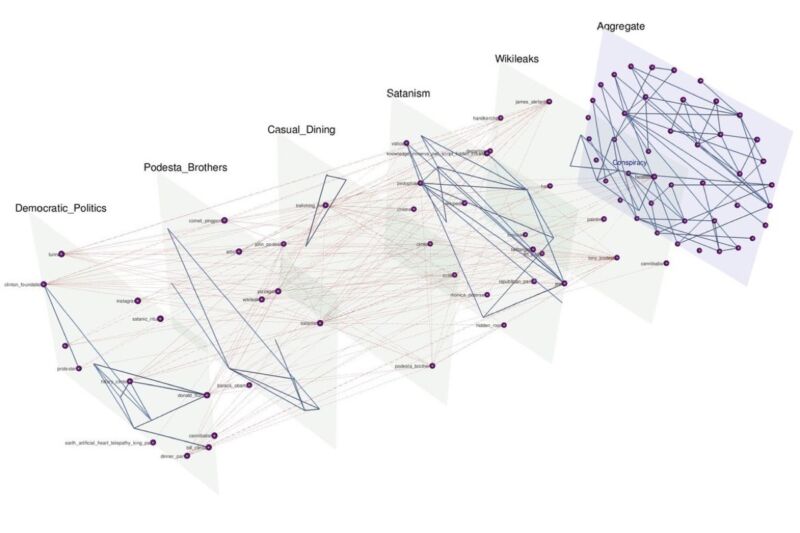
Enlarge / Researchers produced a graphic representation of the Pizzagate conspiracy theory narrative, with layers for major subplots of each story, and lines connecting the key people, places and institutions within and among those layers. (credit: UCLA)
There's rarely time to write about every cool science-y story that comes our way. So this year, we're once again running a special Twelve Days of Christmas series of posts, highlighting one science story that fell through the cracks in 2020, each day from December 25 through January 5. Today: the structure of folklore can help explain how unrelated facts and false information connect into a compelling narrative framework, that can then go viral as a conspiracy theory.
Mark Twain is often credited with the saying, “A lie can travel halfway around the world while the truth is still putting on its shoes.” Twain never actually said it; it appears to be a mutated version of something essayist Jonathan Swift once wrote—a misattribution that aptly illustrates the point. The same is true of a good conspiracy theory, comprised of unrelated facts and false information that somehow get connected into a loose narrative framework, which then spreads rapidly as perceived "truth." According to a June paper published in PLOS ONE, the structure of folklore can yield insights into precisely how these connections get made, and hence into the origins of conspiracy theories.
"We tell stories all the time, and we use them to explain and to signal our various cultural ideologies, norms, beliefs, and values," co-author Timothy Tangherlini, a self-described computational folklorist at the University of California, Berkeley, told Ars. "We're trying to get people either to acknowledge them or align with them." In the case of conspiracy theories, those stories can have serious real-world consequences. "Stories have been impactful throughout human history," he said. "People take real world action on these. A lot of genocide can be traced back to certain stories and 'rumors,' as well as conspiracy theories."
No comments:
Post a Comment